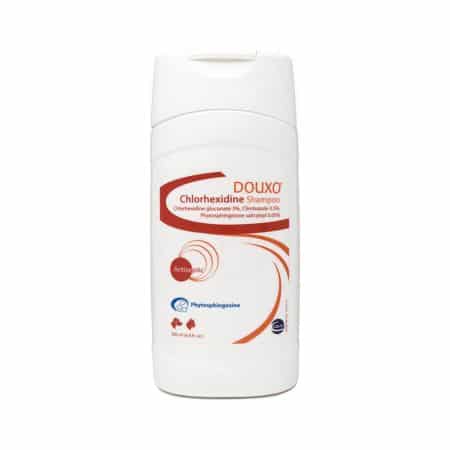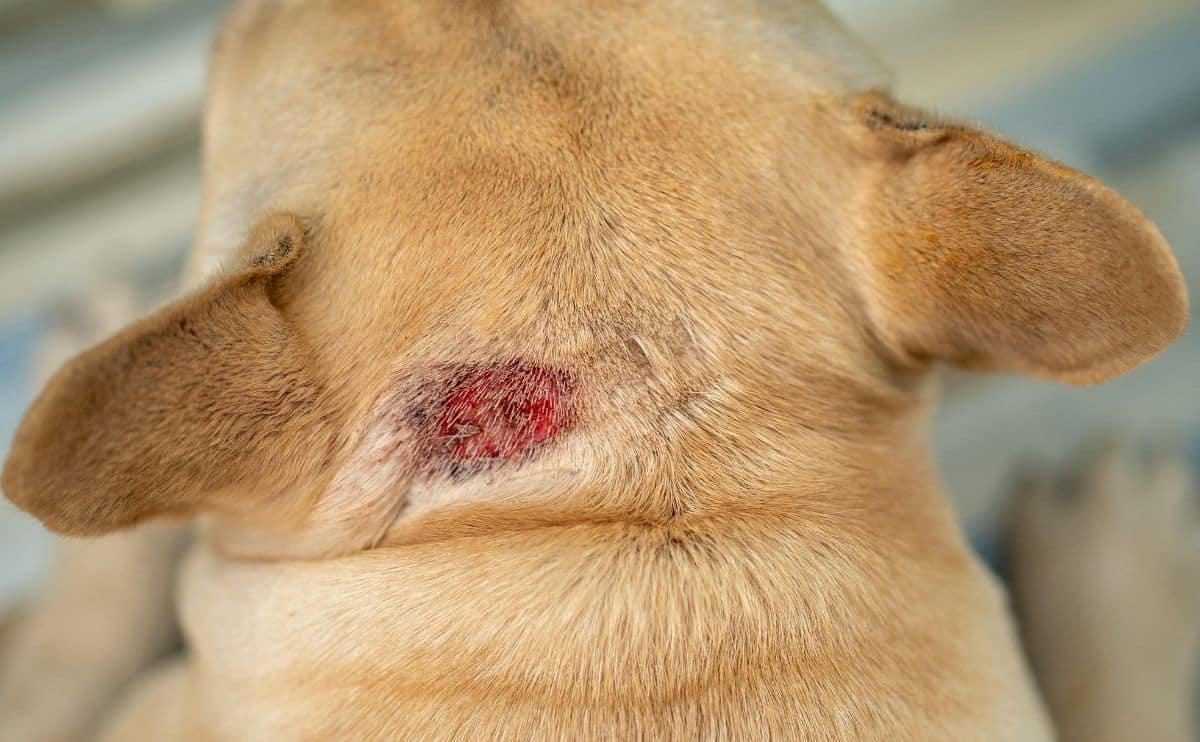Pyoderma In Dogs: Skin Disease Causes & Treatments
When you purchase through links on our site, we may earn a commission. Here’s how it works.

It can be unnerving to see your pup with patches of irritated skin and bumps. If you don’t know what you’re looking at, you definitely won’t know how to deal with it. Pyoderma could be the culprit, so you may want to familiarize yourself with this condition. Understanding the causes and symptoms may help you make the right decisions for your dog’s health.
Table of Contents
What Is Pyoderma?
Pyoderma is a bacterial skin infection that literally means “pus in the skin”. Bacterial pyoderma in dogs appears as small, raised, red bumps, some with pus in them (or pyogenic), that look a lot like pimples. You may also notice scaly, dry, flakey patches, redness, and inflammation.

Is pyoderma in dogs contagious? This infection is sometimes compared to impetigo, mainly when referring to puppies. Impetigo is a skin infection common in human children, and the main difference is that impetigo is contagious, while pyoderma is not contagious.
2 Types Of Pyoderma
There are two types of pyoderma in dogs:
1. Superficial Pyoderma: When the infection gets into the first epidermal layer of the skin, just below the surface and the hair follicles, it’s superficial. This type is the most common form of pyoderma.
2. Deep Pyoderma: Deep pyoderma in dogs is an infection that gets into the root of the hair follicle. When this occurs, it can be harder to treat.
Where Does Pyoderma Appear?
A dog can have pyoderma anywhere on his body. However, here are some places where a deep infection is more likely to occur:
- Chin
- Elbow
- Hocks
- Knees
- Lip fold
- Skin folds
- Muzzle
- Spaces between the toes
- Vulvar folds
What Causes Pyoderma In Dogs?
Pyoderma is usually a secondary infection, which means something else causes the skin to be irritated or broken. Then the bacteria get in the skin, causing pyoderma. Some of the reasons that the skin may be susceptible to an infection include:
- Allergic dermatitis
- Changes to normal skin bacteria
- Cushing’s disease
- Excessive moisture
- Excessive scratching
- Fleas, ticks, or mites
- Fungal skin infection
- Hypothyroidism
- Immune system suppression
- Immunosuppressive drugs
- Lack of blood flow to the skin
- Malnutrition
Pyoderma In Puppies
Puppies have extra sensitive skin that’s more susceptible to skin infections, which is why puppy pyoderma can occur. The main difference with puppy pyoderma is the underlying cause of it is just being a puppy.
Puppy pyoderma is most common in areas where the skin doesn’t have hair to protect it, especially their super cute, soft belly. This form of pyoderma looks similar to adult pyoderma but usually requires less intervention to treat. If your vet decides medication is necessary, they may only recommend a topical spray or ointment as needed.
Diagnosis
Most vets can diagnose pyoderma by looking at the signs and symptoms. However, they may also need to take a skin sample to examine under the microscope to look for bacteria. Sometimes they’ll do a fungal test to rule out other things like ringworm.
An essential part of the diagnosis also involves determining the underlying cause. Your vet may conduct various tests and blood work to get to the bottom of it.
Treatment
There are a few ways to treat pyoderma in dogs. Just remember, it’s always smart to check with your vet before using any treatment or home remedy.
Antibiotics
Because pyoderma is a bacterial infection, your vet may prescribe antibiotics. Amoxicillin, cephalexin, and clindamycin are common prescriptions for this type of infection. The typical treatment time is three to four weeks but can be extended to eight to twelve weeks if necessary.
Pyoderma In Dogs Home Treatment

Topical treatments your vet recommends may include sprays and medicated shampoos that treat and soothe bacterial skin infections. These include products like:
- Douxo Chlorhexidine Spray or Shampoo,
- Strawfield Pets Benzoyl Peroxide Shampoo
- Vetoquino Shampoo containing sulfur with salicylic acid.
How To Use Apple Cider Vinegar To Help
This five-minute video from All Natural Home talks about how apple cider vinegar helps relieve itching and how to mix up an easy solution to use.
The Cost Of Diagnosing And Treating Pyoderma
Diagnosing and treating pyoderma can be expensive. It would be wise to explore whether pet insurance is worth it for your pet while he is young and healthy. If they develop an ailment before you start coverage, any pre-existing conditions may prevent the insurer from covering related expensive medical needs later in life.



